Region South Asia | Course Breakfast, Main course Serving temperature Hot | |
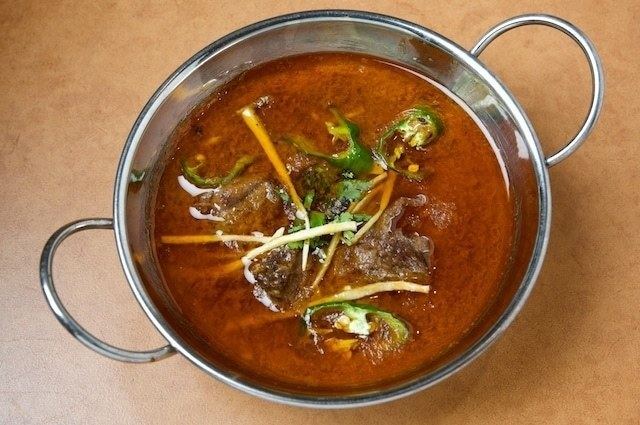 | ||
Other information Served with varieties of Bread Main ingredients Beef shank, Lamb and Mutton Similar Chicken meat, Lamb and mutton, Paya, Haleem, Gosht | ||
Nihari recipe how to make nihari nihari recipe urdu
Nihari (Urdu: نهاری) is a stew consisting of slow-cooked meat mainly beef or lamb along with bone marrow.
Contents
- Nihari recipe how to make nihari nihari recipe urdu
- Nihari restaurant style
- Etymology
- History
- Popularity
- Preparation
- Variations
- Medication
- References
Nihari restaurant style
Etymology
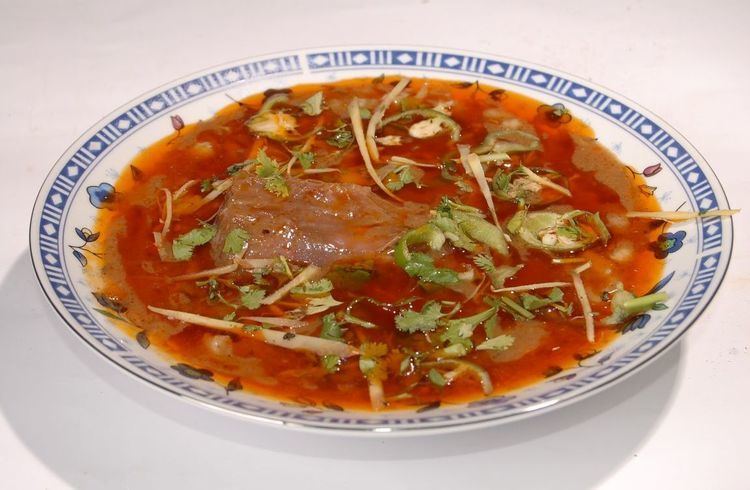
The word Nihar originated from the Arabic word "Nahar" (Arabic: نهار) which means "day" as it was typically served after sunrise Fajr prayers.
History
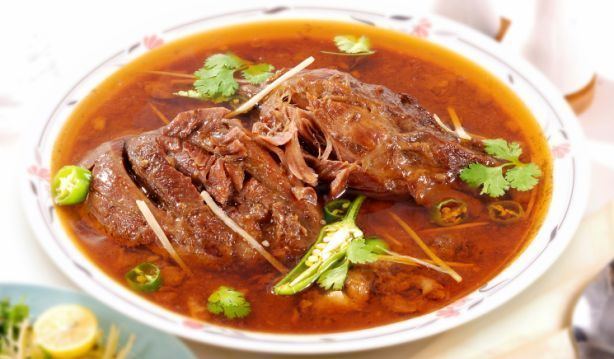
According to many sources, Nihari either originated in Old Delhi (Jama Masjid and Daryaganj areas) in the late 18th century during the last throes of the Mughal Empire or in the royal kitchens of Awadh, in modern day Lucknow, Uttar Pradesh, India. The Nawab ate Nihari early in the morning after Fajr prayers and then took a long nap before going to Zhuhr (afternoon Muslim prayers). Later on, it became popular among the labor class as a regular breakfast item.
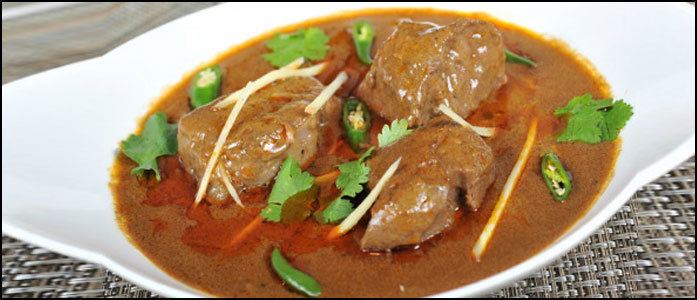
Another story reveals that Nihari was cooked overnight in large volume to be served to the labourers. Whenever there were massive constructions involved and the kings served meals free to labour and also paid them. In some instances kings did not want to offer coins / currencies, they in turn offered free meals and accommodations to the labourers. Since the work had to be started in the morning, it was cooked in an earthern pot, sometimes even buried and served in the morning to ensure the supply of energetic labour force.

Alternative origins puts roots in the Muslim Nawab kitchens, having achieved fame via the storied royal kitchens of Lucknow.

Nihari developed with the overall cuisine of south Asian Muslims. It has been an old popular delicacy in parts of Bangladesh, particularly Dhaka and Chittagong. People cooked it for one whole night and they got it in the early morning at sunrise. It is a popular dish and is regarded as the national dish of Pakistan. The dish is known for its spiciness and taste. It was originally more of a delicacy with myriad variations on spiciness and texture.
Popularity
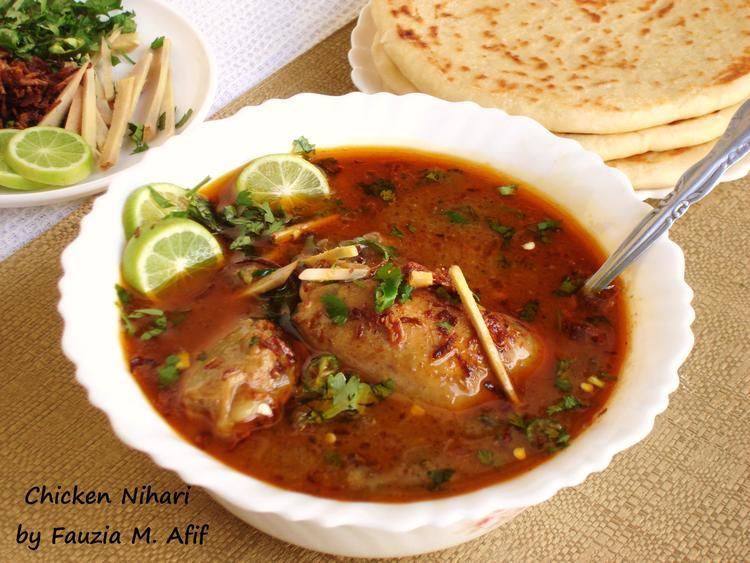
Nihari is a traditional dish of Muslims of Delhi, Bhopal and Lucknow. After the creation of Pakistan in 1947, many Urdu speaking Muslims from northern India migrated to Karachi and other cities in the eastern wing (now in Bangladesh), and established restaurants. In Karachi, Nihari became a roaring success and soon all over Pakistan. Now Nihari is available in Pakistani restaurants around the world. Nihari is considered to be the National Dish of Pakistan .
Preparation
Nihari is cooked overnight in various vessels, sometimes even buried underground while it cooks overnight, which results in extremely tender morsels of meat, including the flavourful bone marrow. It is served with a number of side dishes. The baghaar is lightly fried in ghee to reduce the heat of chilis and the tarka is an additional oily chili to spice up the flavour. Cooked brains and bone marrow are served alongside the stew. The Nihari is garnished according to individual tastes with coriander leaves, fried onions, green chillies, strips of ginger, lemons and sliced white radishes. In addition, garam masala, a blend of powdered spices is sprinkled over the stew. Salt is added to taste. In restaurants many of the garnishings are already added to increase customer turnover.
Traditional nihari recipes call for 6–8 hours of cooking time, in addition to the preparation of the ingredients. This is much less common today with the use of tenderer cuts of meat such as sirloin or shank. Traditionally the dish is eaten in the early hours of the morning. Because the stew is so rich, one is supposed to have an extended nap until the afternoon Muslim Zhuhr prayers, which occur after midday.
Nihari can also be cooked in a pressure cooker in order to save time. The nihari ingredients are now also available ready-mixed and packaged.
Pippali is the main spice used in nihari, which gives it a distinct taste and aroma. It is eaten with naan or roti.
In some restaurants, a few kilos from each day’s leftover Nihari is added to the next day’s pot. This re-used portion of Nihari is called Taar and is believed to provide the unique flavour. Some Nihari outlets in old Delhi still boast of an unbroken taar going back more than a century.
Variations
The Hyderabadi version of the Nihari contains lamb bones and tongue. Another version of Nihari, popularised by the spread of quick-cooking spice recipes from brands like Shan and National Foods of Pakistan, uses chicken to make a sort of thick chicken broth.
Nihari with multilayered Kulcha is a famous cuisine of Old Lucknow. It is available at Gole Darwaza, Chowk Area, near the famous shop of Tunde Kababi.
Nalli nihari is a variation made with marrow bones.
Harissa is a very popular meat preparation made for breakfast in Kashmir Valley, it is slow cooked for many hours, with spices and hand stirred. Harissa has different texture from Nihari, and is much milder in taste, it resembles Nihari in its method of cooking and the base ingredients used.
Medication
Nihari is also used as a home remedy for Common cold, Rhinorrhea and Fever. According to a legend, it was concocted at least a hundred years ago in Delhi by a Hakeem.
